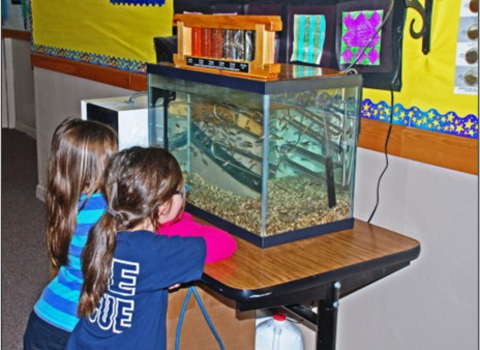It’s springtime and migratory birds are returning to backyards around the Midwest. These colorful creatures are fun to watch and feed, but when birds build their nests close to—or inside—homes and businesses, things can get messy.
Birds may build their nests in entryways, near awnings, under eaves, in shrubbery or planters, and on light fixtures. Areas where construction projects will occur during the nesting season (April through July) should be watched especially closely because nests in these locations have the potential to create significant and costly delays.
The U.S. Fish and Wildlife Service wants to remind home and business owners that the time to remove a potentially messy or hazardous bird nest is while it is being built. If you notice birds beginning to build a nest on your property in an inappropriate place, destroy it immediately to keep yourself from ending up with a nest full of baby birds in an unwanted location.
Because migratory birds are protected under the federal Migratory Bird Treaty Act, it is illegal to harm, kill or possess them without a permit. Their eggs are also protected. Destruction of an active nest—one containing eggs or birds—is against the law. However, migratory bird nests may be destroyed without a permit as long as the nest is inactive (there are no eggs or birds in it). Destroying nests before they are completed will save you a mess and could save you from violating the law.
State laws may be more restrictive, so check with your local Department of Natural Resources to be sure destruction of the nest does not violate state regulations.
If a bird nest contains eggs or young, you will need to looks for ways to live with it until the young are old enough to leave the nest on their own. Landowners are expected to be vigilant before the nest becomes a problem, and removal after the eggs are laid requires a permit which is both costly and usually difficult to justify. Recognizing potential problems before they become real problems is the best way to deal with inappropriately placed bird nests.
Birds most commonly encountered in places which conflict with human activities include Canada geese, mallards, robins, barn swallows and cliff swallows. If you are not sure whether the birds nesting in your backyard are protected under the Migratory Bird Treaty Act, you can find a list of protected birds on the Web at http://migratorybirds.fws.gov/intrnltr/mbta/mbtintro.html, or you can call the Fish and Wildlife Service’s Midwest Region Migratory Bird Management Office at 612-713-5436.
The U.S. Fish and Wildlife Service is the principal federal agency responsible for conserving, protecting and enhancing fish, wildlife and plants and their habitats for the continuing benefit of the American people. The Service manages the 95-million-acre National Wildlife Refuge System, which encompasses 545 national wildlife refuges, thousands of small wetlands and other special management areas. It also operates 69 national fish hatcheries, 63 Fish and Wildlife Management offices and 81 ecological services field stations. The agency enforces federal wildlife laws, administers the Endangered Species Act, manages migratory bird populations, restores nationally significant fisheries, conserves and restores wildlife habitat such as wetlands, and helps foreign governments with their conservation efforts. It also oversees the Federal Assistance program, which distributes hundreds of millions of dollars in excise taxes on fishing and hunting equipment to state fish and wildlife agencies.


